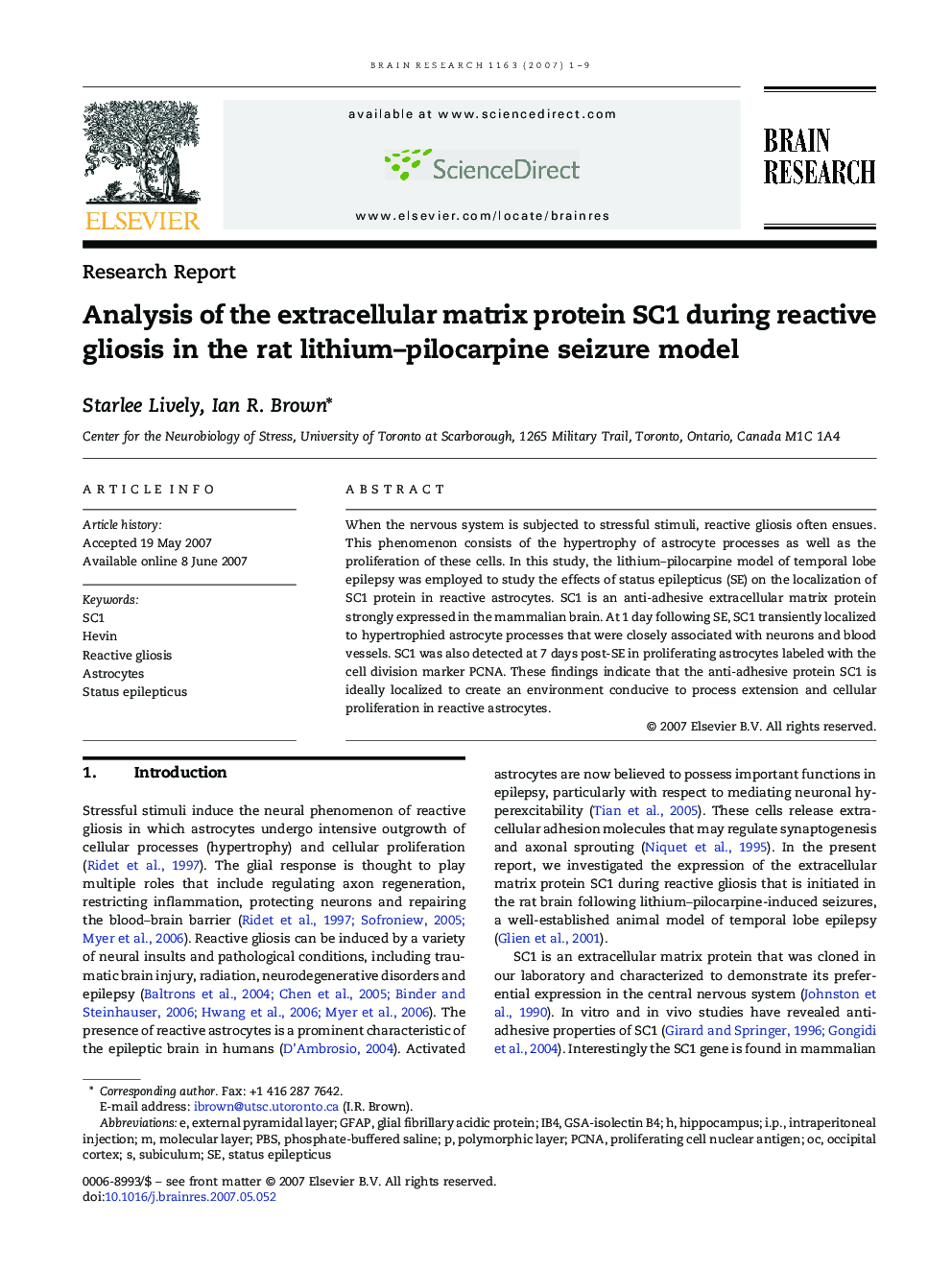| Article ID | Journal | Published Year | Pages | File Type |
|---|---|---|---|---|
| 4330771 | Brain Research | 2007 | 9 Pages |
When the nervous system is subjected to stressful stimuli, reactive gliosis often ensues. This phenomenon consists of the hypertrophy of astrocyte processes as well as the proliferation of these cells. In this study, the lithium–pilocarpine model of temporal lobe epilepsy was employed to study the effects of status epilepticus (SE) on the localization of SC1 protein in reactive astrocytes. SC1 is an anti-adhesive extracellular matrix protein strongly expressed in the mammalian brain. At 1 day following SE, SC1 transiently localized to hypertrophied astrocyte processes that were closely associated with neurons and blood vessels. SC1 was also detected at 7 days post-SE in proliferating astrocytes labeled with the cell division marker PCNA. These findings indicate that the anti-adhesive protein SC1 is ideally localized to create an environment conducive to process extension and cellular proliferation in reactive astrocytes.
